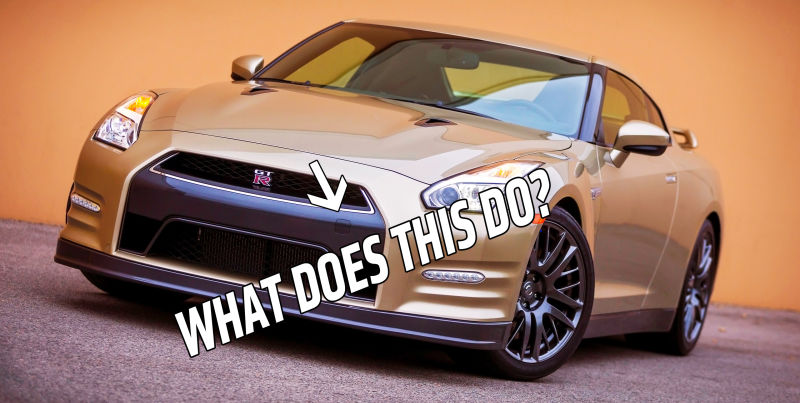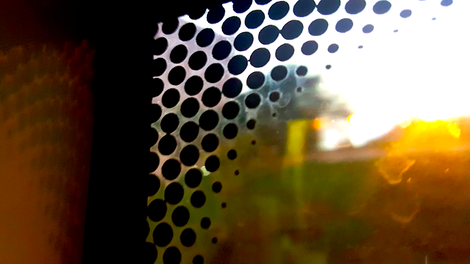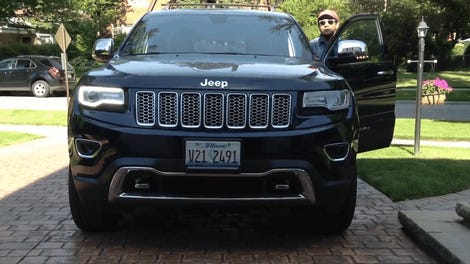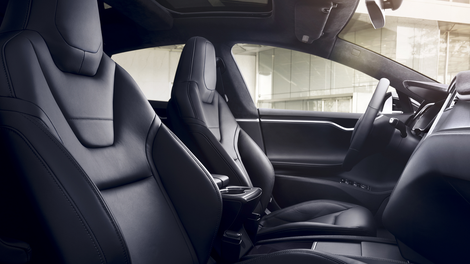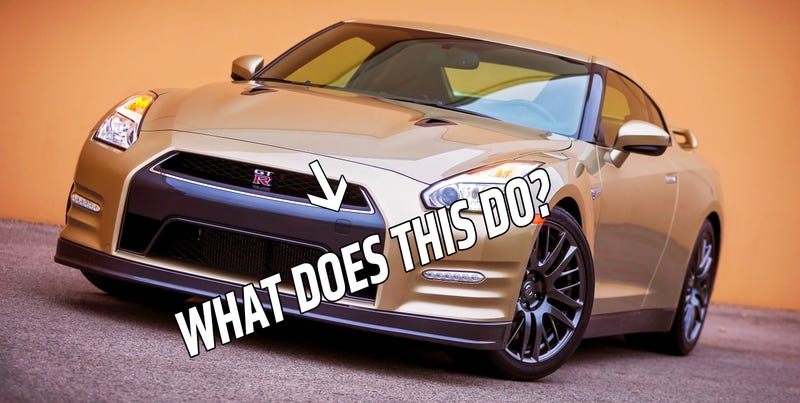
If you look at the front and rear bumpers on many new cars, you’ll notice little squares and circles about the size of potato chips sitting right there in the plastic bumper covers. Don’t feel bad if you don’t know why they’re there! I’m about to tell you.
Advertisement
About a year ago, my brother decided to drive a Mercedes CLA rental car into my muddy backyard. That did not go well:
Since the ground was so slippery, my attempts to push the car out of the rut were futile, and the car had to be towed out. But, as the CLA sits low to the ground and rides on a unibody platform covered in belly pans, there weren’t any places to attach a tow hook.
Advertisement
Luckily, there was this little square in the rear lower fascia:
That little plastic square hides a weld-nut, which is part of the bumper beam. The purpose of that weld nut is to provide a provision for a tow eye. Here’s a look at that weld nut in the bumper beam:
The tow eye that threads into that hole through the plastic bumper cover is often found under the load floor in the trunk area near the spare tire, like on the Mercedes S500 below:
The tow eye cover simply pops out with a push of the finger:
That then reveals the weld-nut in the bumper beam:
From there, an owner simply threads in the tow eye:
And, finally, you wind up with a nice, strong place by which to yank the vehicle:
Having noticed this plastic “knock-out” in a number of other cars, including exotics like the Nissan GT-R, I decided to see why it is that even supercars compromise otherwise-clean fascias to make room for a little plastic window for tow-eye access.
Advertisement
Sponsored
So, I contacted the Chief engineers for Toyota trucks and the Jeep Compass, Mike Sweers and Art Anderson, respectively.
Sweers told me that recovery points are not required by law in North America, and that a few of the reasons why we see them here have to do with market demand and automakers’ own transport needs. He said:
Advertisement
In (a vehicle with a low seating position) there may not be sufficient clearance to reach a chassis component to recover, tow or even anchor a vehicle down to a flat bed or a trailer. The OEM then offers a bumper reinforcement solution, threaded anchor, to allow strap or clevis attachment without damage to the bumper cover. On vehicle that have access to chassis, the OE may [use] a front frame stamping for strap attachment. Please note that the OE may also need/use these anchors for shipping purposes.
Mike then delved into how designing tow points on a truck is a bit different, saying:
Trucks a bit of a different story. Same needs but due to Hpt or ground line, the Stramotas angles need to be considered. Pulling or being pull by these anchor points the strap must clear all body lines to prevent damage. The OE may place out front for easy access based on the truck usage, like off roading. Or the OE may want to make a functional styling statement.
So, based on Mike’s response, it seems these tow points are there on passenger cars, at least in part, because customers want a way to pull vehicles without damaging them, and because automakers want the ability to easily transport cars. Makes sense.
Advertisement
But, there’s another reason having to do with regulatory requirements, 2017 Jeep Compass chief engineer Art Anderson told me at the launch event for the new compact crossover.
Art said that Europe requires all vehicles to have a tow eye provision, both in the front and rear. He then showed me on his phone the relevant legislation, which came up when he typed “ECE tow eye reg” into his search engine.
Advertisement
So, after speaking with Art, I typed those keywords into my search bar and found EU Commission Regulation Number 1005, which included:
1. SPECIFIC REQUIREMENTS
1.1. Minimum number of devices.
1.1.1.
All motor vehicles must have a towing device fitted at the front.
1.1.2.
Vehicles in category M1, as defined in Directive 2007/46/EC Part A of Annex II, except for those vehicles not suitable for towing any load, must also be fitted with a towing device at the rear.
Note that vehicle category M1 comprises passenger cars. The reg went on, saying:
Advertisement
1.1.3.
A rear towing device may be substituted by a mechanical coupling device, as defined in UN-ECE Regulation No 55 (1), provided that the requirements of paragraph 1.2.1. are met.
1.2. Load and stability
1.2.1.
Each towing device fitted to the vehicle must be able to withstand a tractive and compressive static force equivalent to at least half the technically permissible maximum laden mass of the vehicle.
That “Mechanical coupling device” is defined in ECE Number 55 as, essentially, the load bearing parts of the body and chassis— for example, a weld nut in a bumper beam.
So, Europe requires that there be tow points available on all passenger cars, but why do we see them in the states? Art told me that part of the reason why we see cars in the U.S. with “knock-outs” in their bumpers is because automakers like to use common fascias for multiple markets as often as they can to minimize cost and complexity.
Art reiterates that these kinds of tow eyes, which thread into bumper beams, are only required to hold half of the vehicle’s Gross Vehicle Weight (in both compression, and tension) whereas vehicles meant for off-road use—like the Compass— are designed with dedicated tow hooks that can handle well over the car’s Gross Vehicle Weight (2.5 times Gross Vehicle Weight, in the case of the Compass). In other words, don’t expect to hang the entire vehicle off the threaded weld nut.
So, if you’ve been wondering about the little shapes found in many cars’ bumpers, now you know that they’re plastic covers hiding a threaded nut, which is welded to the front bumper. It’s there on U.S. vehicles because it serves practical purposes for customers and automakers, but also because Europe requires these provisions, and automakers are all about sharing common components across markets.

